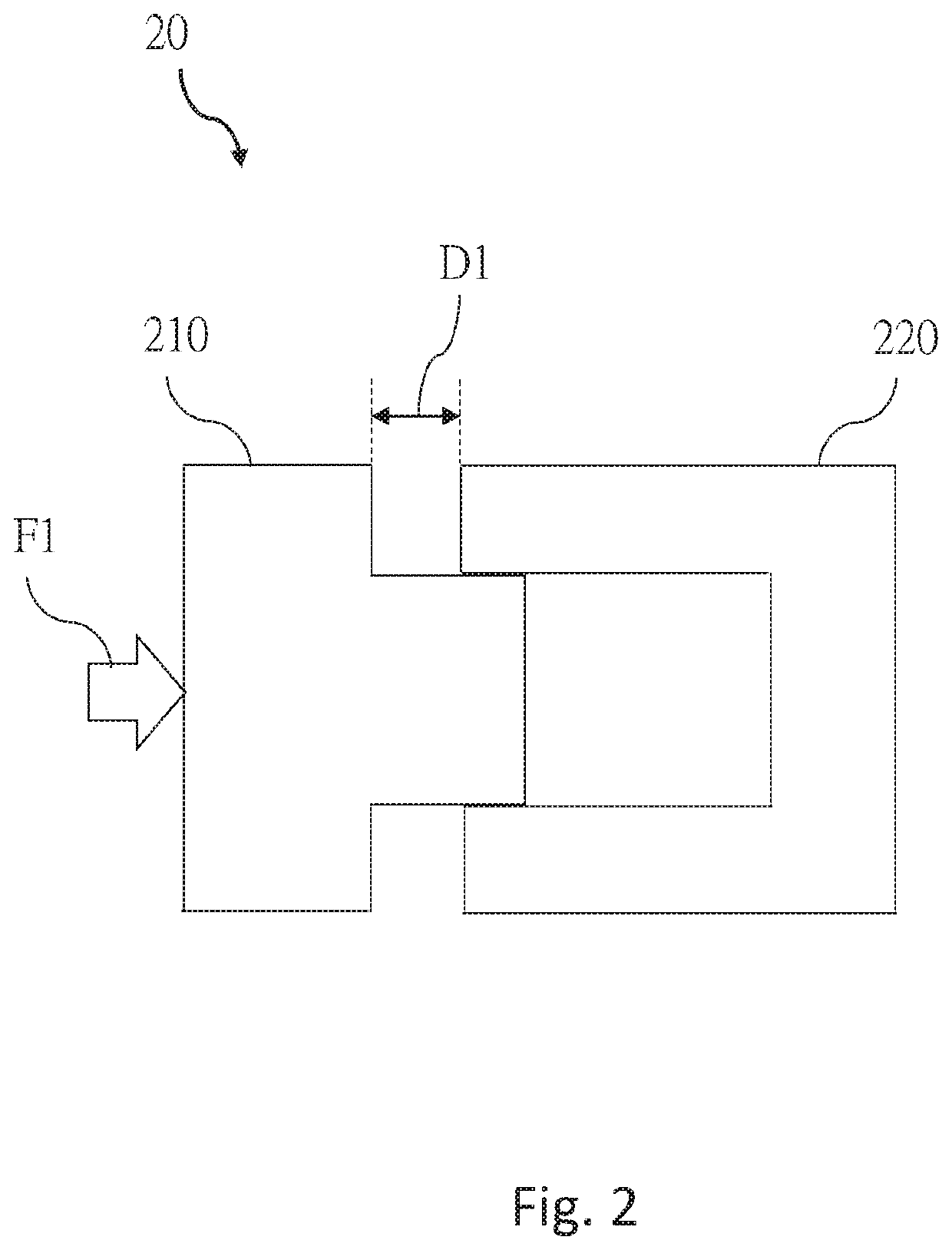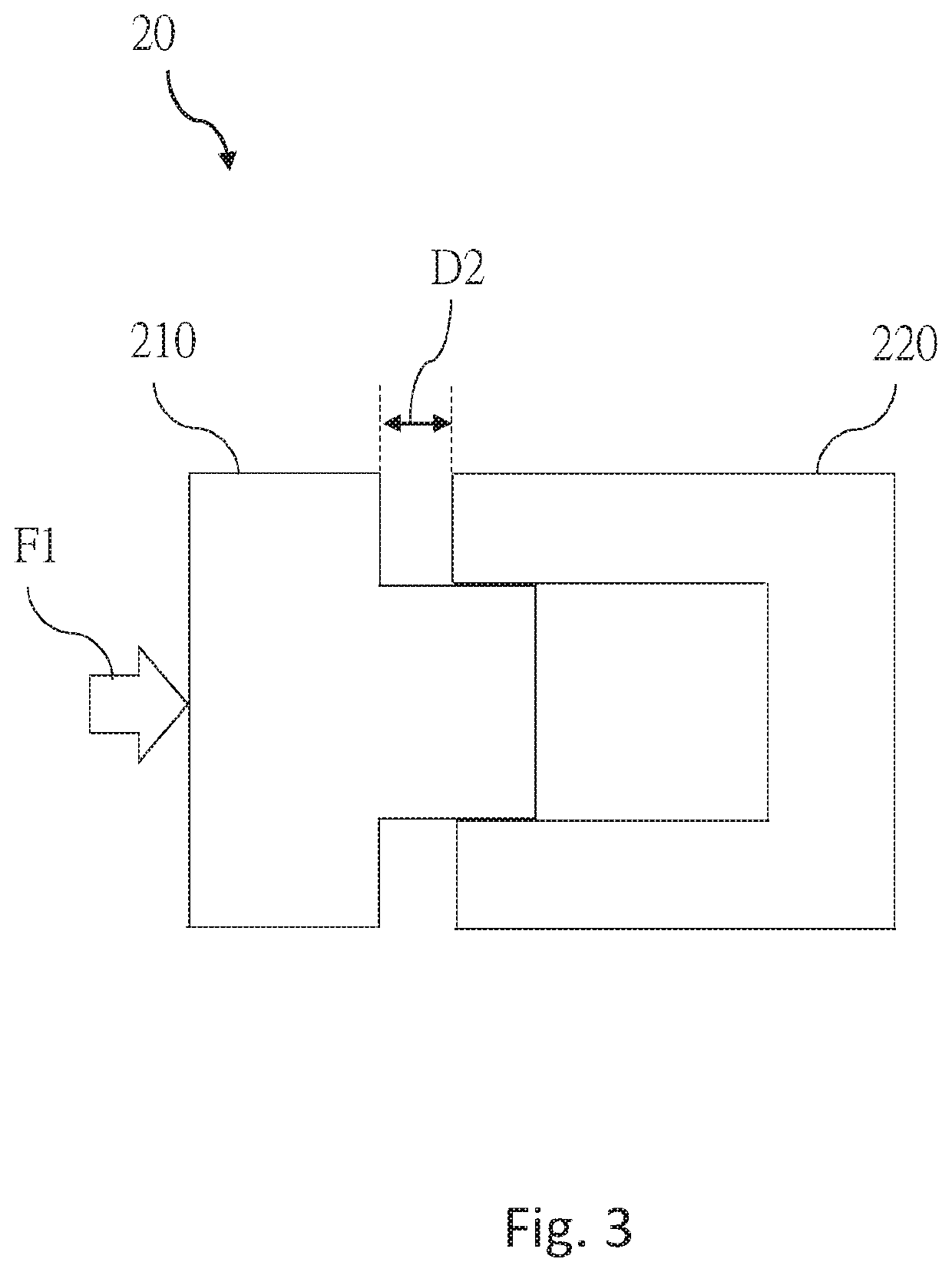Shoe component and manufacturing method thereof
a technology of shoe components and foaming, applied in the field of shoe components, can solve the problems of poor mechanical strength of foaming shoe components made from eva, such as midsoles, poor durability and compression sets, poor stability of shoe components after injection molding, etc., and achieves the effects of less bore diameter, increased mechanical strength of foaming shoe components, and reduced bore diameter
- Summary
- Abstract
- Description
- Claims
- Application Information
AI Technical Summary
Benefits of technology
Problems solved by technology
Method used
Image
Examples
first embodiment
[0030]According to the present disclosure, as shown in FIG. 2 and FIG. 3, the mold 20 includes a first molding member 210 and a second molding member 220, wherein the first molding member 210 and the second molding member 220 are correspondingly mated, and the first molding member 210 can be moved relative to the second molding member 220 by an external force F1. In Step 106 of FIG. 1, the step of releasing the predetermined gas pressure of the mold performs in a process of the first molding member 210 moved from a first position (as shown in FIG. 2) to a second position (as shown in FIG. 3) by the external force F1. In FIG. 2, when the first molding member 210 is at the first position, a shortest distance of the first molding member 210 to the second molding member 220 is defined as a first distance D1. In FIG. 3, when the first molding member 210 is at the second position, a shortest distance of the first molding member 210 to the second molding member 220 is defined as a second d...
second embodiment
[0031]According to the present disclosure, as shown in FIG. 4 and FIG. 5, the mold 20 includes a first molding member 210 and a second molding member 220, wherein the first molding member 210 and the second molding member 220 are correspondingly mated, and the first molding member 210 can be moved relative to the second molding member 220 by an external force F2. In Step 106 of FIG. 1, the step of releasing the predetermined gas pressure of the mold performs in a process of the first molding member 210 moved from a first position (as shown in FIG. 4) to a second position (as shown in FIG. 5) by the external force F2. Through the first molding member 210 is pulled toward the second molding member 220, a foaming space in the mold 20 could be increased, so as to decrease the specific gravity of the foaming body.
[0032]In FIG. 4, when the first molding member 210 is at the first position, a shortest distance of the first molding member 210 to the second molding member 220 is defined as a...
PUM
| Property | Measurement | Unit |
|---|---|---|
| gas pressure | aaaaa | aaaaa |
| diameters | aaaaa | aaaaa |
| gas pressure | aaaaa | aaaaa |
Abstract
Description
Claims
Application Information
 Login to View More
Login to View More - R&D
- Intellectual Property
- Life Sciences
- Materials
- Tech Scout
- Unparalleled Data Quality
- Higher Quality Content
- 60% Fewer Hallucinations
Browse by: Latest US Patents, China's latest patents, Technical Efficacy Thesaurus, Application Domain, Technology Topic, Popular Technical Reports.
© 2025 PatSnap. All rights reserved.Legal|Privacy policy|Modern Slavery Act Transparency Statement|Sitemap|About US| Contact US: help@patsnap.com



